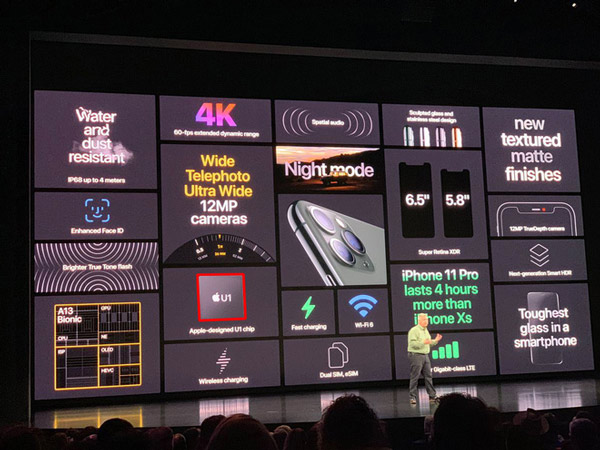Amazon Sidewalk, the new wireless connectivity protocol that promises to help you know the location of anything
It's not the next-generation smart speakers or Alexa virtual assistant, the highlight on Amazon's Alexa and Echo event stage is Sidewalk, the company's new wireless connection protocol.
For wireless control of smart devices, users usually choose Bluetooth or Wifi. But both of these options are limited by distance, and users can only order them when approaching them. Users can also opt for data connections like 4G or 5G, but they're complicated and power-hungry.

Limiting the distance in the above wireless connection protocols will be overcome with Sidewalk, Amazon's new connection protocol. Amazon Sidewalk uses the 900MHz band to connect, so it can extend the device control distance up to 500m or even kilometers. Due to the lower frequency, the energy consumption is also less. Even Amazon Sidewalk with mesh network can expand the connection range up to a city, bringing unprecedented benefits.
For example, when your pet wears a Ring Fetch, Amazon's dog collar product will launch next year, running outside the garden around the house, you will receive a warning. If the Amazon Sidewalk protocol becomes popular on a large scale you will even be able to determine where your dog is, a play area nearby or a neighbor's house.

Apple and Amazon, great minds meet
Coincidentally, Apple is also having the same ambition of being able to locate objects remotely from Amazon. Apple's ambition lies in the U1 chip.
Unlike Sidewalk that uses a 900MHz band to connect to remote devices, Apple's U1 chip can accurately locate objects in a room by using the ability to locate via ultra-wide-range ultra-short range. .

If Apple and Amazon work together they can easily pinpoint the exact location of almost everything.
Amazon has conducted a test to prove the connectivity and coverage of Amazon Sidewalk. Amazon's Sidewalk broadcasting equipment was broadcast to 700 employees of the company living in the Los Angeles Basin. These devices are within 500m to one mile of the distance, allowing users to wirelessly connect to their devices at an unbelievable and identifiable distance from any device in Los Angeles. .
Meanwhile, although compatibility between Apple devices and rival devices in the smart home ecosystem is impossible due to the tight control of its software and services on the iPhone. But due to the popularity of Apple's hardware, when the U1 chip is built into its device, it can still build a network of necessary access points. This will help users to find lost objects, even if it is located in a hidden corner of the room.

There is enormous potential in the future, but now is not the time
While it is easy to deploy its technology solution, both Apple and Amazon remain silent about the technology for now. Perhaps because the performance of this technology is not good enough, there are not many applications for it or both technology guys want to be more cautious because of concerns about users' privacy issues.
But certainly, Apple's close-range connectivity, and Amazon's long-range intermediary connectivity are vital to both companies' ambitions for the near future. It is likely that in the next decade, this technology will define the hardware and service efforts of each company.
- Launching Vmap - Digital Map of Vietnam, showing details of each house number including remote areas
You should read it
- Popular network protocols today
- How to arrange network connection on Windows 10
- Install laptop to prioritize wired network connection
- How to Set Up a Wireless Network (WiFi) Connection
- Remote connection management with mRemote Connection Manager
- The way that 5G will change Internet connection in your home
- Set up wireless network
- How strong is the wireless signal in your Wi-Fi network?
May be interested
- UWB Technology: Promising future
 the uwb (ultra-wideband wireless) wireless technology promises to replace not only irda and bluetooth technology, but also a wireless revolution in the home. like other mainstream technologies, uwb targets home users. people
the uwb (ultra-wideband wireless) wireless technology promises to replace not only irda and bluetooth technology, but also a wireless revolution in the home. like other mainstream technologies, uwb targets home users. people - Troubleshoot Wi-Fi connectivity problems in iPad and iPhone
 in the wireless lan troubleshooting tips, i showed you how to troubleshoot windows, router and physical connectivity issues. however, if you are experiencing wlan issues with your iphone or ipad, you can follow the connection troubleshooting steps we provide in this article.
in the wireless lan troubleshooting tips, i showed you how to troubleshoot windows, router and physical connectivity issues. however, if you are experiencing wlan issues with your iphone or ipad, you can follow the connection troubleshooting steps we provide in this article. - Looking back at Amazon's 2017
 there are many things that happened in 2017, it's hard to know where to start when looking at the tech giant's 2017s. therefore, for e-commerce companies like amazon, it is best to start with a simple statement: reduce avocado prices.
there are many things that happened in 2017, it's hard to know where to start when looking at the tech giant's 2017s. therefore, for e-commerce companies like amazon, it is best to start with a simple statement: reduce avocado prices. - DD-WRT Guide - Part 3: Building a Wireless Bridge
 network connectivity is emerging more and more in non-traditional electronic devices, including digital music players, digital cameras, printers ...
network connectivity is emerging more and more in non-traditional electronic devices, including digital music players, digital cameras, printers ... - What is the newly announced WPA3 WiFi security protocol?
 the new wifi alliance announced the long-awaited new generation wireless security protocol - wifi protected access (wpa3).
the new wifi alliance announced the long-awaited new generation wireless security protocol - wifi protected access (wpa3). - Instructions on how to buy online on Amazon
 just sit at home and a few clicks can buy. some websites sell online are quite popular like ebay, amazon ... amazon is simply an online supermarket, you can order online any product on it and pay via card.
just sit at home and a few clicks can buy. some websites sell online are quite popular like ebay, amazon ... amazon is simply an online supermarket, you can order online any product on it and pay via card. - What is an IP address?
 ip address (internet protocol ip) is the number of formats for a network hardware, devices that use ip addresses to communicate with each other over an ip-based network like the internet.
ip address (internet protocol ip) is the number of formats for a network hardware, devices that use ip addresses to communicate with each other over an ip-based network like the internet. - A simple number, explaining why Amazon dares to sell cheap Kindle
 in a year, the average kindle owner spent more than $ 443 on purchases from amazon compared to customers who did not own the company's technology equipment.
in a year, the average kindle owner spent more than $ 443 on purchases from amazon compared to customers who did not own the company's technology equipment. - Popular network protocols today
 there are many protocols while establishing a connection on the internet. based on the type of connection to be established, the protocols used are also varied. these protocols define the characteristics of the connection.
there are many protocols while establishing a connection on the internet. based on the type of connection to be established, the protocols used are also varied. these protocols define the characteristics of the connection. - Wifi = does not mean anything?
 about the name wifi, many people do not really understand this name. according to research, the name wifi was derived from the integration of wireless connectivity standards in the us, originating in 1985. thanks to the success of ethernet wired network, some companies began to recognize that
about the name wifi, many people do not really understand this name. according to research, the name wifi was derived from the integration of wireless connectivity standards in the us, originating in 1985. thanks to the success of ethernet wired network, some companies began to recognize that










 Intel launches 10th-generation Core X-series processors, the most powerful model with 18 cores priced under $ 1,000
Intel launches 10th-generation Core X-series processors, the most powerful model with 18 cores priced under $ 1,000 Facebook will launch Horizon virtual reality social network in 2020
Facebook will launch Horizon virtual reality social network in 2020 iPhone 2020 will be able to own design similar to iPhone 4
iPhone 2020 will be able to own design similar to iPhone 4 The 89-year-old grandmother, who has been playing the game for nearly 40 years, is the oldest gamer in the world
The 89-year-old grandmother, who has been playing the game for nearly 40 years, is the oldest gamer in the world Ubisoft opened a game development studio in Da Nang, recruiting 100 people
Ubisoft opened a game development studio in Da Nang, recruiting 100 people Recently launched, Huawei Mate 30 Pro rookie is always the best smartphone photography in the world
Recently launched, Huawei Mate 30 Pro rookie is always the best smartphone photography in the world